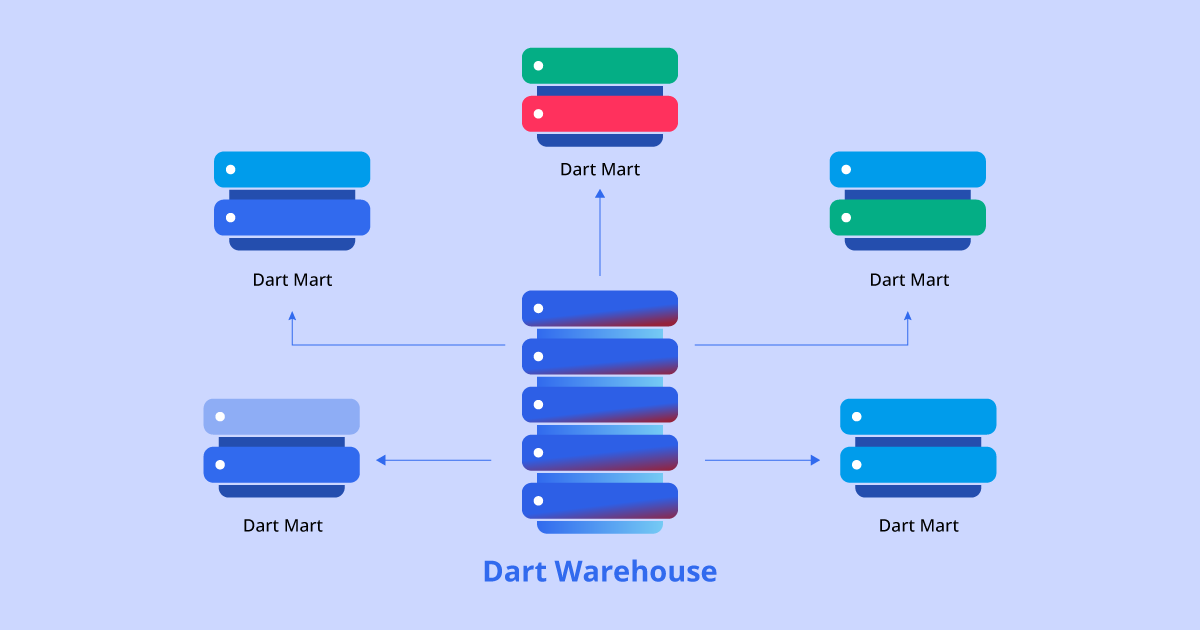
Want to reduce Sampling Error? Here’s what you need to know!
Want to reduce Sampling Error? Here’s what you need to know! Try a free Voxco Online sample survey! Unlock your Sample Survey SHARE THE ARTICLE

Find the best survey software for you!
(Along with a checklist to compare platforms)
Take a peek at our powerful survey features to design surveys that scale discoveries.
Explore Voxco
Need to map Voxco’s features & offerings? We can help!
Find the best customer experience platform
Uncover customer pain points, analyze feedback and run successful CX programs with the best CX platform for your team.

We’ve been avid users of the Voxco platform now for over 20 years. It gives us the flexibility to routinely enhance our survey toolkit and provides our clients with a more robust dataset and story to tell their clients.
Steve Male
VP Innovation & Strategic Partnerships, The Logit Group
Explore Regional Offices

Find the best survey software for you!
(Along with a checklist to compare platforms)
Take a peek at our powerful survey features to design surveys that scale discoveries.
Explore Voxco
Need to map Voxco’s features & offerings? We can help!
Find the best customer experience platform
Uncover customer pain points, analyze feedback and run successful CX programs with the best CX platform for your team.

We’ve been avid users of the Voxco platform now for over 20 years. It gives us the flexibility to routinely enhance our survey toolkit and provides our clients with a more robust dataset and story to tell their clients.
Steve Male
VP Innovation & Strategic Partnerships, The Logit Group
Explore Regional Offices

Find the best survey software for you!
(Along with a checklist to compare platforms)
Take a peek at our powerful survey features to design surveys that scale discoveries.
Explore Voxco
Need to map Voxco’s features & offerings? We can help!
Find the best customer experience platform
Uncover customer pain points, analyze feedback and run successful CX programs with the best CX platform for your team.

We’ve been avid users of the Voxco platform now for over 20 years. It gives us the flexibility to routinely enhance our survey toolkit and provides our clients with a more robust dataset and story to tell their clients.
Steve Male
VP Innovation & Strategic Partnerships, The Logit Group
Explore Regional Offices
SHARE THE ARTICLE ON

Large organizations are constantly collecting and analyzing vast amounts of data to gain insights and make informed decisions. To manage such large amounts of data, they often rely on data storage and management solutions such as data marts, data warehouses, and data lakes. Although these terms are often used interchangeably, there are some key differences that businesses should be aware of while selecting the right solution for their needs.
In today’s blog post, we will explore the key differences between data marts and data warehouses, and will also touch upon what a data lake is. By the end of this post, businesses will have a better understanding of which solution is best suited for their data needs.
A data mart is a segment, or subset, of a larger data warehouse, created to meet the needs of a particular business unit or department. A data mart, on the other hand, contains a smaller and more concentrated set of data that is suited for the department or user group in question to leverage. The data in a data mart is often set up so that users may access and examine it with ease.
A data mart’s main objective is to give a particular user group or department instant access to relevant data. For many departments, including sales, marketing, finance, and operations, data marts can be constructed and filled with information from varied sources. Departmental managers may make informed decisions more rapidly with access to relevant data, which enhances business performance and efficiency.
A data mart typically keeps data from a single source, as opposed to a data warehouse, which holds data from various sources. The data is typically optimised for analysis and arranged in a way that makes it simple to interpret and apply to a certain department or user group. Because of this, data marts are perfect for businesses with numerous departments that require quick and effective access to and analysis of data.
A data warehouse is a vast, central store of data from several sources all around a business. A data warehouse’s data is arranged in such a way that it is easy to query and analyse, with the objective of giving insights that can assist companies in making better decisions.
A data warehouse’s primary function is to provide a holistic picture of an organization’s data, enabling cross-functional analysis and decision-making. Data warehouses are designed for complicated queries and reporting and often employ a relational database management system (RDBMS) to organise and store data.
Organizations with a lot of structured data from several sources, like sales data, customer data, and financial data, benefit most from the use of data warehouses. Organizations may carry out in-depth analysis and obtain insights into their operations, performance, and client behaviour by having all of this data at a single source.
A data warehouse’s reach is wider and more extensive than a data mart’s. Data warehouses are intended to provide an extensive perspective of the organization’s data across all departments and user groups, in contrast to data marts, which focus on providing quick access to pertinent data for a particular department or user group. Click here to check out our recent blog where we go over how you can enhance customer insights by leveraging the right data unification platform.
Now that we’ve gone over the definitions and functions of data marts and data warehouses, let’s examine their primary distinctions.
1. Size and scope:
The size and scope of data warehouses are often broader than that of data marts. Data marts are targeted at a particular department or user group, whereas data warehouses are created to store data from across an organisation.
2. Data structure and organization:
Data warehouses are structured in a way that allows for complex queries and reporting. Data marts, on the other hand, are designed for quick and easy access to relevant data. Data in a data warehouse is usually organized in a star schema or snowflake schema, while data marts can be organized in various ways depending on the specific department or user group’s needs.
3. Data usage and access:
Data warehouses are made available to all user groups and departments because they are created for cross-functional analysis and decision-making. On the other hand, data marts are designed to meet the unique requirements of a department or user group, enabling rapid and simple access to pertinent data.
4. Data sources:
Structured and unstructured data from many sources inside an organisation can be stored in data warehouses. On the other hand, data marts often include information from just one or a small number of sources.
5. Time required for implementation:
Due to their larger size and complexity, data warehouses usually take longer to implement than data marts. Since they’re targeted at a particular department or user group, data marts can be established more quickly.
6. Cost implications:
Due to their greater scale and complexity compared to data marts, data warehouses can be more expensive to construct and operate. Yet, by enabling cross-functional analysis and decision-making, data warehouses can ultimately result in significant cost reductions.
Receive real-time insights that drive impact within your organization.
Understanding the advantages and disadvantages of data marts and data warehouses can help businesses determine which solution is best suited for their needs.
Pros of Using a Data Mart
1. Access to pertinent data quickly and easily: Data marts are created to offer quick and simple access to pertinent data for a certain department or user group. This can facilitate more effective decision-making.
2. Reduced cost: Because of their smaller size and scope, data marts may be created more rapidly and at a lesser cost than data warehouses.
3. Scope for customization: Data marts can be customised to meet the unique requirements of a department or user group, enabling specialized reporting and analysis.
Cons of Using a Data Mart
1. Restricted scope: Data marts are primarily intended for a single department or user group, which might result in siloed data and a lack of overall organisation visibility.
2. Restricted scalability: Data marts are not made to handle massive amounts of data from numerous sources, which may limit their long-term utility.
3. Data duplication: Data marts may result in data duplication throughout the company, which may result in inconsistent and inaccurate reporting and analysis.
Pros of Using a Data Warehouse:
1. Comprehensive view of organizational data: Cross-functional analysis and decision-making are made possible by data warehouses, which offer a holistic picture of an organization’s data.
2. Scalability: Data warehouses are better long-term solutions due to their scalability, which allows them to handle massive amounts of data from many sources.
3. Increased data consistency: By centralising data and ensuring that it is maintained in a standardised format, data warehouses can aid in enhancing data consistency throughout the business.
Cons of Using a Data Warehouse:
1. Cost: Data warehouses’ greater size and complexity might make them more expensive to establish and operate.
2. Time required for implementation: Due to their greater size and complexity, data warehouses often require more time to implement than data marts.
3. Technical expertise required: Data warehouses must be designed, implemented, and maintained with technical competence, which might be a hurdle for some firms.
Data lakes are a relatively recent addition to the data storage environment, and there are a number of ways in which they differ from conventional data warehouses and data marts. Structured, semi-structured, and unstructured data can all be kept in a data lake, which is a central repository. The data is not pre-aggregated or pre-processed; it is stored in its unprocessed, original version. Large volumes of data from numerous sources may be handled by data lakes since they are made to be very scalable.
Data lakes are a relatively recent addition to the data storage environment, and there are a number of ways in which they differ from conventional data warehouses and data marts. Structured, semi-structured, and unstructured data can all be kept in a data lake, which is a central repository. The data is not pre-aggregated or pre-processed; it is stored in its unprocessed, original version. Large volumes of data from numerous sources may be handled by data lakes since they are made to be very scalable.
To learn more about data lakes and data warehouses, you can read our blog “Data lake vs Data Warehouse: What is the biggest difference?”.
In conclusion, the best data solution for your company will depend on the demands and objectives that are unique to it. Data marts, data warehouses, and data lakes all have their own advantages and disadvantages, so choosing the best solution necessitates thorough evaluation of issues including data structure, organisation, utilisation, sources, implementation time, and cost implications.
Key Takeaways:
The ideal data solution for your company will ultimately depend on your unique requirements and objectives. Understanding the distinctions between data marts, data warehouses, and data lakes can help you carefully weigh your options, choose the right solution for your needs, and provide your company the insights and intelligence it needs to thrive in the data-driven world of today.
The two main advantages of data marts compared to data warehouse are:
An example of a data mart would be a marketing data mart, which would contain a subset of data from a larger data warehouse or data lake, specifically focused on marketing data such as customer demographics, behavior, preferences, and sales data.
Yes, a data mart is a type of data warehouse. A data mart is a smaller, more focused subset of a larger data warehouse, containing data that is specific to a particular department, function or user group within an organization.
In the context of data warehousing, a data mart is a subset of a larger data warehouse that is designed to serve the needs of a particular department, function, or user group within an organization.

Want to reduce Sampling Error? Here’s what you need to know! Try a free Voxco Online sample survey! Unlock your Sample Survey SHARE THE ARTICLE

The 5 Key Steps in an Effective Risk Management Process SHARE THE ARTICLE ON Table of Contents Introduction Any business that wants to succeed and

Case Study The Logit Group The Logit Group is an innovative, technology-driven research execution company. We’re a team of holistic research practitioners, and aim to

All you need to know about Customer Lifetime Value Free Download: Enhance NPS® Scores using our NPS® Survey Templates Download Now SHARE THE ARTICLE ON

Diversity of Research Methodology : A Guide to Different Types of Research Methodology SHARE THE ARTICLE ON Table of Contents Research is a methodology used

Why You Should Be Using Skip Logic to Enhance Respondent Experience Transform your insight generation process Use our in-depth online survey guide to create an
We use cookies in our website to give you the best browsing experience and to tailor advertising. By continuing to use our website, you give us consent to the use of cookies. Read More
| Name | Domain | Purpose | Expiry | Type |
|---|---|---|---|---|
| hubspotutk | www.voxco.com | HubSpot functional cookie. | 1 year | HTTP |
| lhc_dir_locale | amplifyreach.com | --- | 52 years | --- |
| lhc_dirclass | amplifyreach.com | --- | 52 years | --- |
| Name | Domain | Purpose | Expiry | Type |
|---|---|---|---|---|
| _fbp | www.voxco.com | Facebook Pixel advertising first-party cookie | 3 months | HTTP |
| __hstc | www.voxco.com | Hubspot marketing platform cookie. | 1 year | HTTP |
| __hssrc | www.voxco.com | Hubspot marketing platform cookie. | 52 years | HTTP |
| __hssc | www.voxco.com | Hubspot marketing platform cookie. | Session | HTTP |
| Name | Domain | Purpose | Expiry | Type |
|---|---|---|---|---|
| _gid | www.voxco.com | Google Universal Analytics short-time unique user tracking identifier. | 1 days | HTTP |
| MUID | bing.com | Microsoft User Identifier tracking cookie used by Bing Ads. | 1 year | HTTP |
| MR | bat.bing.com | Microsoft User Identifier tracking cookie used by Bing Ads. | 7 days | HTTP |
| IDE | doubleclick.net | Google advertising cookie used for user tracking and ad targeting purposes. | 2 years | HTTP |
| _vwo_uuid_v2 | www.voxco.com | Generic Visual Website Optimizer (VWO) user tracking cookie. | 1 year | HTTP |
| _vis_opt_s | www.voxco.com | Generic Visual Website Optimizer (VWO) user tracking cookie that detects if the user is new or returning to a particular campaign. | 3 months | HTTP |
| _vis_opt_test_cookie | www.voxco.com | A session (temporary) cookie used by Generic Visual Website Optimizer (VWO) to detect if the cookies are enabled on the browser of the user or not. | 52 years | HTTP |
| _ga | www.voxco.com | Google Universal Analytics long-time unique user tracking identifier. | 2 years | HTTP |
| _uetsid | www.voxco.com | Microsoft Bing Ads Universal Event Tracking (UET) tracking cookie. | 1 days | HTTP |
| vuid | vimeo.com | Vimeo tracking cookie | 2 years | HTTP |
| Name | Domain | Purpose | Expiry | Type |
|---|---|---|---|---|
| __cf_bm | hubspot.com | Generic CloudFlare functional cookie. | Session | HTTP |
| Name | Domain | Purpose | Expiry | Type |
|---|---|---|---|---|
| _gcl_au | www.voxco.com | --- | 3 months | --- |
| _gat_gtag_UA_3262734_1 | www.voxco.com | --- | Session | --- |
| _clck | www.voxco.com | --- | 1 year | --- |
| _ga_HNFQQ528PZ | www.voxco.com | --- | 2 years | --- |
| _clsk | www.voxco.com | --- | 1 days | --- |
| visitor_id18452 | pardot.com | --- | 10 years | --- |
| visitor_id18452-hash | pardot.com | --- | 10 years | --- |
| lpv18452 | pi.pardot.com | --- | Session | --- |
| lhc_per | www.voxco.com | --- | 6 months | --- |
| _uetvid | www.voxco.com | --- | 1 year | --- |